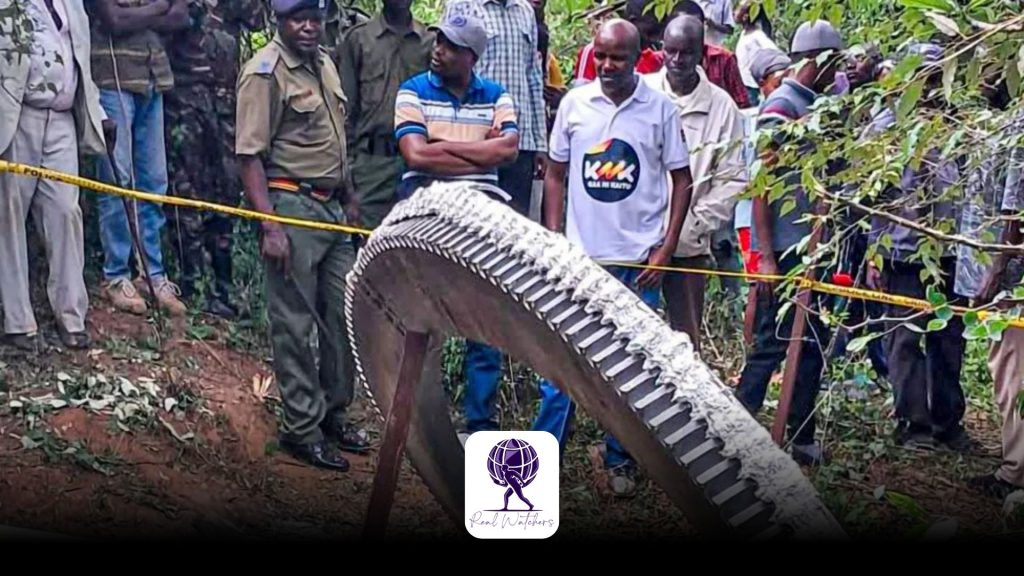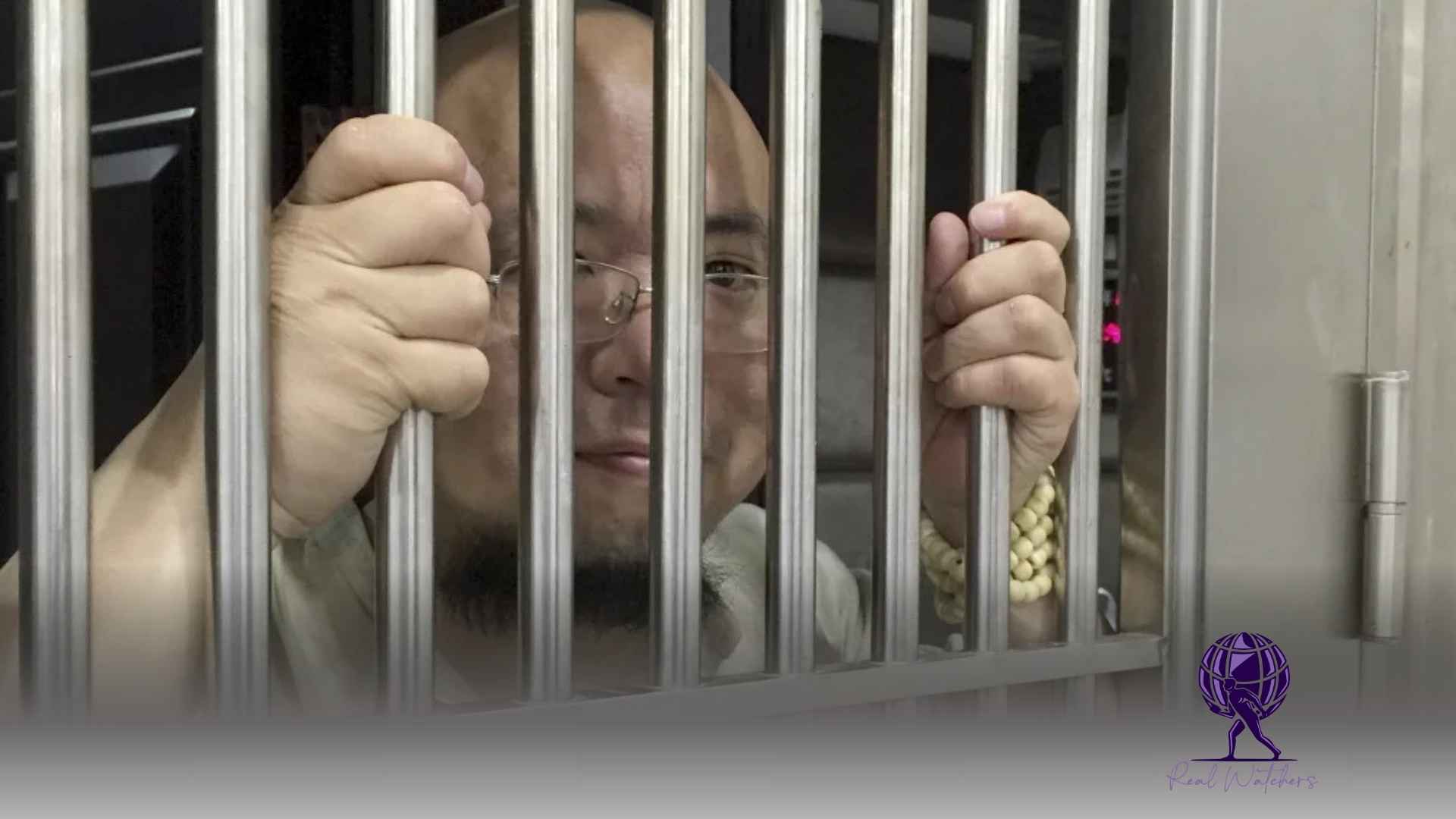On a recent afternoon, Kenyan villagers enjoying a leisurely day with family and friends were abruptly startled by an eerie whizzing sound, which was soon followed by a significant boom.
“The noise was reminiscent of an explosion, leaving me in a state of disbelief.” “I began to look around, questioning whether those were gunshots,” said Stephen Mangoka, a 75-year-old farmer from Mukuku village in Makueni County, in an interview with the BBC.
I gazed upward, scanning the sky for any signs of smoke. There is nothing to report.
I hurried to the road to investigate whether an accident had occurred. Additionally, there is nothing to report. At that moment, I was informed of an object that had descended from the heavens.
A substantial round metal object fell from the sky, crashing onto farmland adjacent to a dry riverbed, and it was extremely hot to the touch.
“We discovered a large piece of metal that was intensely red, necessitating a wait for it to cool before anyone could safely approach,” stated Ann Kanuna, the landowner where the object landed.
The massive ring required approximately two hours to cool and transform into a grey hue, yet it had already captivated the public, drawing crowds eager to witness the spectacle.
On that Monday afternoon, as the day before New Year’s Eve saw a reduced workforce, throngs of visitors gathered to admire the imposing metallic ring.
The scene resembled a hub of activity, as individuals flocked to capture photos alongside it, sparking lively discussions about its potential significance.
Local authorities in Makueni County, located approximately 115 kilometres (70 miles) southeast of the capital city, Nairobi, have been notified.
The Kenya Space Agency (KSA) was alerted to the situation and promptly organised an investigation for the following day.
The object’s notoriety instilled a sense of fear among the Mukuku villagers, who worried it might be taken under the cover of darkness.
Several individuals alternated shifts in collaboration with local officers to maintain a watchful presence, igniting a fire nearby. Authorities aimed to deter potential scrap dealers and others seeking to profit from the intrigue surrounding the situation.
The object is reported to weigh over 500kg (1,102lb), comparable to the weight of an adult horse. It measures approximately 2.5m (8ft) in diameter, similar to a child’s four-seater merry-go-round.
As daylight broke on New Year’s Eve, an increasing number of onlookers, accompanied by the KSA team and media members, gathered.
Mukuku had never witnessed such a flurry of activity. As the KSA removed the object later that day, the initial excitement shifted to apprehension among the villagers regarding what had been present in their community.
The Kingdom of Saudi Arabia reported that its initial evaluations suggested the object in question was identified as “a separation ring” from a space launch rocket.
The following day, the statement noted that these objects are typically engineered to disintegrate upon re-entering the Earth’s atmosphere or to descend over uninhabited regions, including oceans.
No injuries were reported following the incident, but residents in Mukuku expressed concerns that the crash’s impact may have caused damage to nearby homes.
Christine Kionga, residing approximately one kilometre from the crash site, pointed out the cracks in the concrete of several buildings within her home compound. She reported that they emerged following the crash.
Some neighbours have claimed that the structural integrity of their homes has also been compromised, though these allegations remain unverified.
“The government must identify the owners of this object and secure compensation for those impacted by it,” stated Benson Mutuku, a resident of Mukuku, in an interview with the BBC.
Local media outlets reported that several residents expressed concerns about feeling unwell following exposure to the metallic ring. However, during our visit, we found no confirmation from those we spoke to, the authorities or the KSA.
Mr Mutuku expressed concerns regarding the potential long-term effects of space radiation.
“This object from space has raised concerns within the community, particularly as similar incidents in the past have shown that radiation effects can impact future generations. This fear looms large among residents.”
Subsequent tests conducted by the Kenya Nuclear Regulatory Authority indicated that although the metal ring exhibited elevated radiation levels compared to its surrounding environment, these levels were not deemed harmful to human health.
Engineers from the KSA, established in 2017 to promote, coordinate, and regulate space-related activities in the East African nation, are conducting additional tests to gather more information about the object.
The director general of KSA remarked on the fortunate outcome, noting that no substantial damage occurred when the object descended to Earth.
Brigadier Hillary Kipkosgey stated in an interview with the BBC that the state under whose jurisdiction the operator launched the space object bears the ultimate responsibility for any resulting damage or injury.
The Outer Space Treaty, which the UN Office monitors for Outer Space Affairs, stipulates that “states shall be liable for damage caused by their space objects.”
Brigadier Kipkosgey stated, “The ring is a common item found in numerous rockets and various space objects, making it challenging to link it to a particular rocket or space object. However, we do have some leads, though our investigations remain inconclusive.”
The BBC presented images of the object to the UK Space Agency for expert analysis and commentary.
“The most likely explanation for the object is that it is the upper stage separation ring from an Ariane rocket launched in 2008,” stated Matt Archer, the launch director.
“While the satellites remain intact, the rocket body has successfully de-orbited.”
The Ariane served as Europe’s primary rocket launch vehicle, successfully placing over 230 satellites into orbit before its retirement in 2023.
The separation ring appears to have been in orbit around Earth for 16 years before its surprising emergence in Mukuku.
The emergence of space debris in East Africa is not a novel occurrence.
Approximately a year and a half ago, reports of suspected space debris descending upon multiple villages in western Uganda emerged.
On January 8, unconfirmed reports emerged regarding what appeared to be space debris igniting in the skies over northern Kenya and southern Ethiopia.
With the expansion of the space industry, experts anticipate increased incidents involving space debris. This trend suggests that African governments may need to allocate resources towards improving detection methods for this accelerating space waste.
NASA estimates that over 6,000 tonnes of space debris currently orbit the Earth.
Various estimates exist regarding the likelihood of debris striking an individual, with the majority falling within the one-in-10,000 range.
The statistics provide scant reassurance for the residents of Mukuku, who are left to ponder the potential devastation the ring could have inflicted had it struck the heart of their village rather than the surrounding farmland.
“Mr. Mutuku emphasised the necessity for guarantees from the government to prevent a recurrence of the situation.”








